Gwalior Chapter
23 - 26 Dec 2023
CompletedOverview
The Gwalior chapter of Bṛhat Anveṣī brings you a great range of these architectural, sculptural, historical, spiritual and natural wonders.
Morena, the district next door boasts hundreds of ancient temples, in great cultural continuity starting from around 1500 years ago to almost contemporary times. Orchha, is a legend of Raja Rama rivaling that of Ayodhya itself, with its quaint temples alongside the fast flowing Betwa river in pristine forests of the region, and Datia speaks of the splendor of the Bundelas and the power of Åakti Peetha. Welcome, to the Madhya Pradesh (North) chapter of Bá¹hat Anveṣī where you will get to experience a great range of these architectural, sculptural, historical, spiritual and natural wonders.
Highlights
Highest number of temples and different architecture styles across 17 sites
Famous Chausath Yogini Mandir
44 Temples on one platform - Bateshwar group of temples
Window into Civic Architecture of ancient and medieval era in Gwalior fort.
Renowned iconography expert Shri Ramakrishna Kongalla and seasoned Kuchipudi artist & researcher Dr. Anupama Kylash join as special guests
Local cuisine
Sūtradhāra - Your Temple Expert

Pankaj Saxena
Pankaj is an author on Hindu temples, arts, literature, history and culture. His writing explains the beauty of Sanātana Dharma through stories about traditions, communities and culture. He has a deep interest in cultural anthropology, evolutionary biology and ecology, and has visited more than 1600 Hindu temples.
Interested in this chapter?
We do not plan to repeat previously completed chapters in the near future. However, if you have a group of 15–20 interested individuals who'd love to explore this chapter, do write to us. We'd be happy to create a special on-demand Anveṣī experience just for your group.
Temples Covered

Sasbahu Temples, Gwalior Fort
Sasbahu Temple is a pair of two temples that are collectively called Sas Bahu. Some say it is a distorted form of the word Sahasrabahu and the bigger temple originally must have been dedicated to Vishnu. However, both seem to be Shiva temples. The practice of calling them Sasbahu must have come later. They were built by the Kachchhapaghata dynasty in late 11th century. Although only mandapas survive of the two temples and the garbha-grihas are long destroyed by invaders, the mandapas themselves are a thing to marvel and like no other. They are three storeyed and thus are extremely unique creations. They are beautifully carved with sculptures of immense beauty. Commanding a high position in Gwalior Fort, they look down upon whole of Gwalior including the modern city.

Teli Ka Mandir
It is the highest temple with Valabhi shikhara in north India. It was built in 8th or 9th century. As its garbha-griha is rectangular with a Valabhi shikhara, it was most probably a Shakta temple dedicated to a Matrika or Yogini. Valabhi shikhara in north India was inavraibly built to host a Yogini, a Great Goddess worshipped by the Shaktas. Various legends tell that it was built by the donation of a Telugu king or overlord. It is built in the Gurjara Pratihara style with particular Gopagiri or Gwalior embellishments. Being very high and situated on the Gwalior Fort, it is visible from almost everywhere in the city and also holds a commanding view of the countryside.
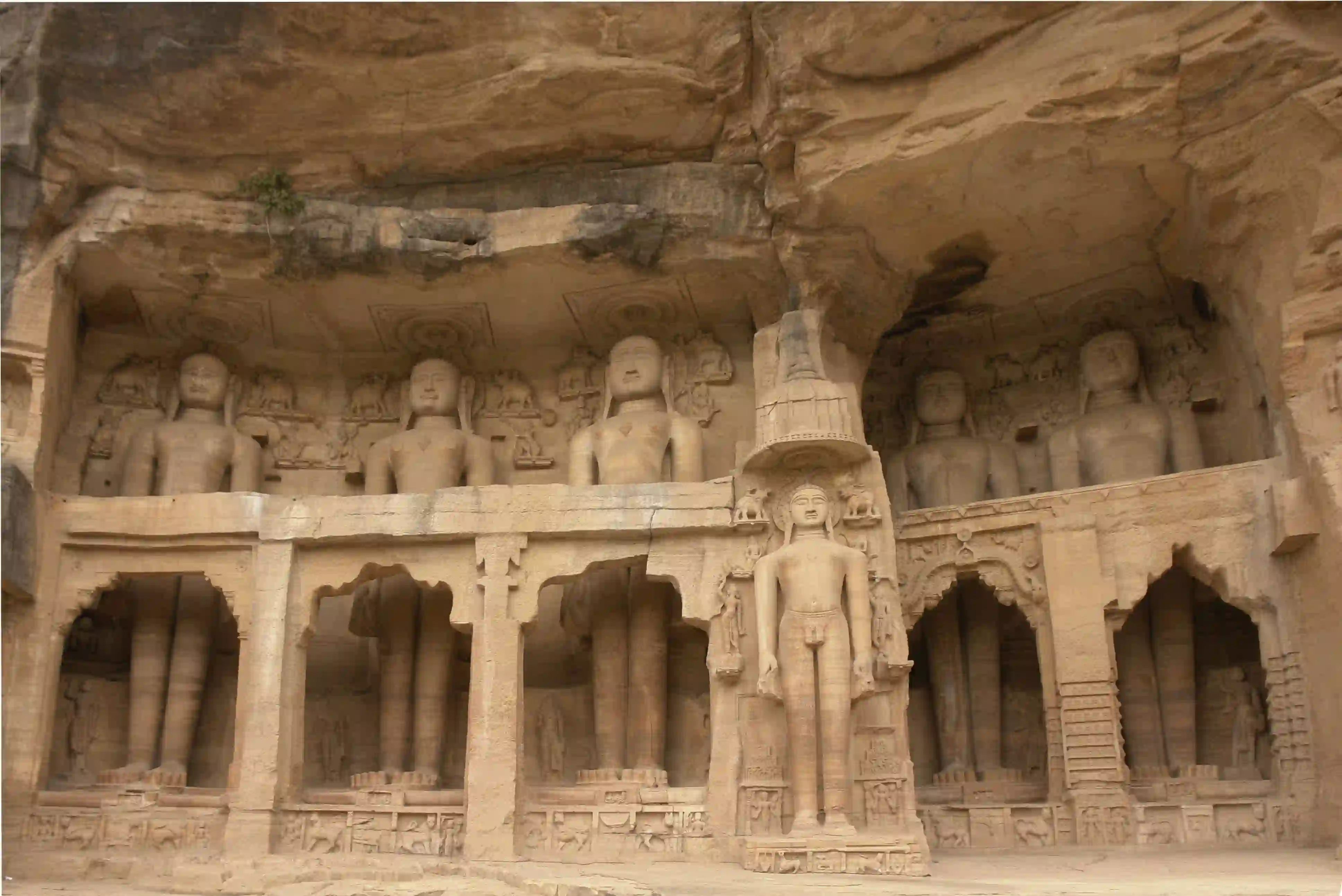
Jain Monoliths
While ascending the Gwalior Fort, one can find hundreds upon hundreds of huge monoliths of Jain Tirthankaras etched on the hills. They are some of the largest Jain Monoliths found anywhere in the country. Some of them were carved in 7th century but some of the biggest ones were carved in 15th century when the Gwalior Fort was retaken by Hindu Tomar kings who contributed to a lot of architectural marvels in and around the Fort. Some of the Tirthankaras are more than 30 feet high and command a majestic view. Tirthankaras like Neminatha and Parshvanatha are specially featured. Most of these are desecrated by Islamic invaders and are renovated.
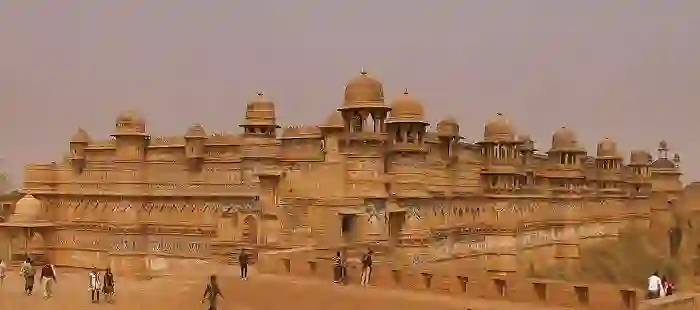
Gwalior Fort
Gwalior Fort itself is a marvel to watch. It is one of the most important forts in north India and was considered necessary to win for making conquests further south. Without winning this fort, Malwa and all kingdoms down south won’t open. The fort has existed at least since 6th century CE and probably even before that. The Man Mandir palace was built by the great Tomar king Man Singh Tomar along with Gujari Mahal for the great Mriganayanai in 16th century. The fort was a centre of music, dance and all other fine arts, along with being a great bastion of kshatriyas. The fort houses many temples like Sas-bahu temples, Teli ka Mandir, Chaturbhu temples etc.
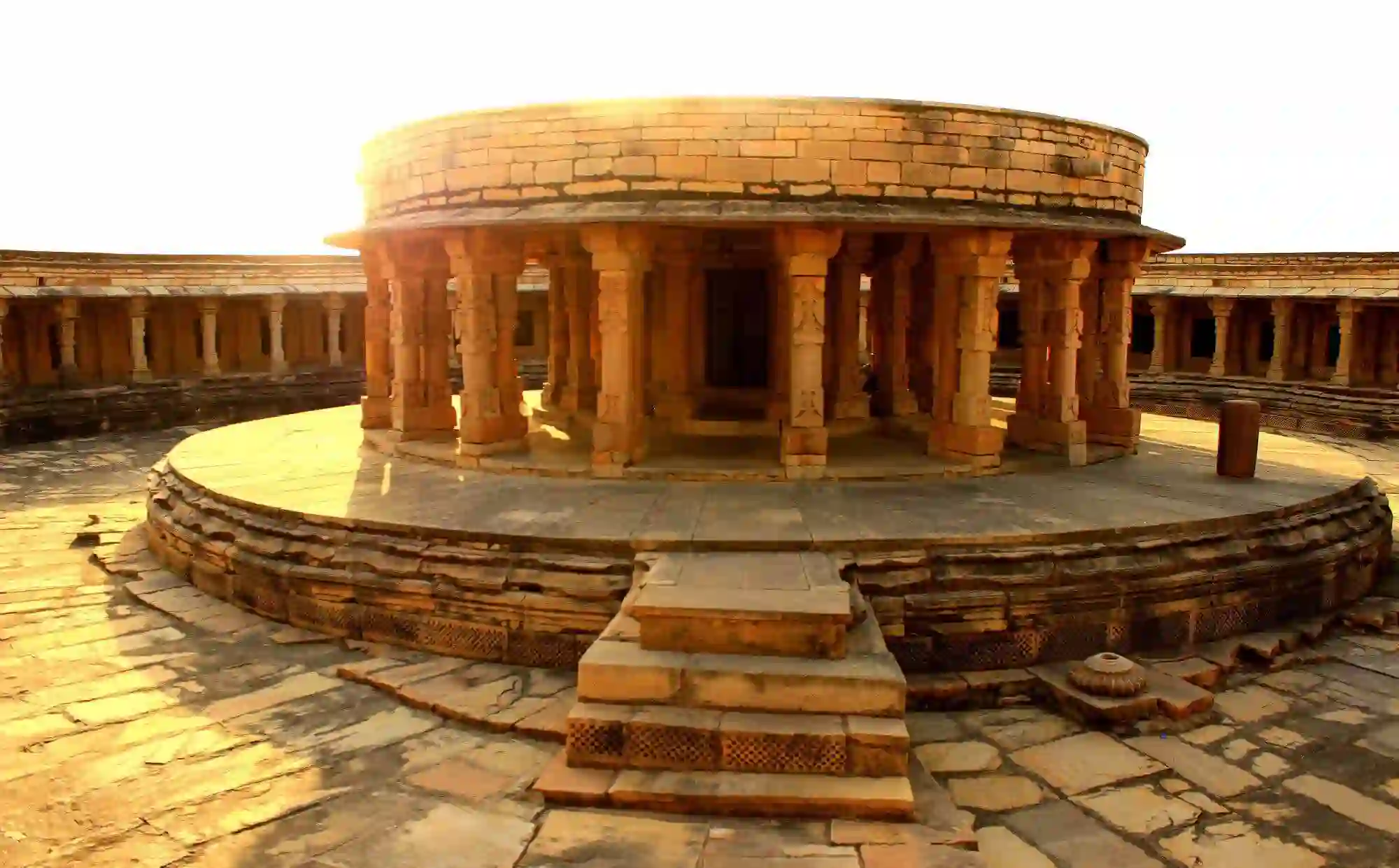
Chausath Yogini Temple – Mitavali
Chausath Yogini Temple, Mitavli in Morena is one of the rarest of Hindu temples in India. Its plan is circular and it is dedicated to the Tantric sect of Chausath Yogini. Most of the Hindu temples are based on a square or rectangular plan. Circular temples are very rare. It is said that the design of Indian Parliament is inspired by this temple in Morena. It was built by Kachhapaghata dynasty in 9th-10th century. It is also a very rare temple as there are only about seven or eight Chausath Yogini temples in India. The Yoginis are related to the Matrikas and are basically various manifestations of the Divine Goddess Durga. Yogini worship in this form was very famous in central India in medieval times and almost all of these temples are found in Madhya Pradesh, Chhattisgarh and Odisha.

Shiva Temple Mandapa – Padavali
It constitutes of remains of an ancient Shiva Temple, built by the Kachhapaghata dynasty in 10th century C.E. In its sculptural richness, it rivals even the Khajuraho Group of Monuments. The most astonishing and the most endearing part of the mandapa is its ceiling. It is carved in exquisite detail and the carvings are pervasive. Many of the friezes depict scenes from the Ramayana, the Mahabharata and the Puranas. Also depicted on the ceiling and pillars of the mahamandapa are the scenes of guru-shishya and surasundaris. The temple is dated at 10th century C.E. Profusely sculpted, it is one of the glories of the Morena district.
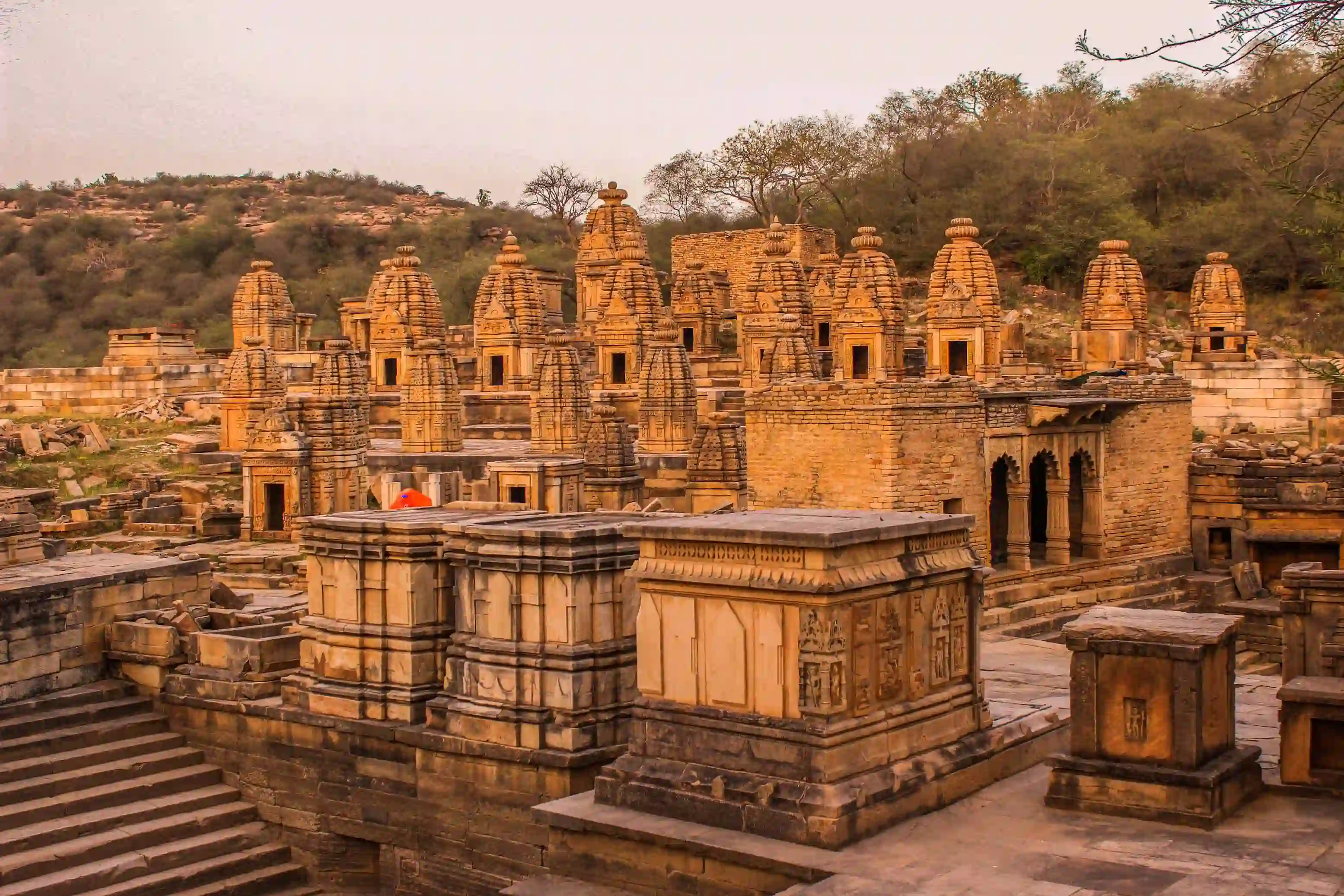
Bateswar Group of Temples – 44
The Bateshwar Group of Temples comprises about 44 temples spread over an area of 25 acres, built across the sloping hills at Bateshwar, Morena. Most of the temples are dedicated to Shiva or Vishnu. They were built during 8th and 10th century C.E. by the Gurjara-Pratiharas. Most of them are built in the nagara style with a simple shikhara, no mandapa and a small precursor of antarala. The nagara style shikhara is topped with an amalaka or two in some cases, and a pot finial at the top. The shikhara is triratha with a mesh of gavaksha arranged in a line, reaching up to the top. A minority of the temples have a simple mandapa with two pillars and no enclosing walls. The entire platform makes for a very impressive sight. As a result of Islamic invasions, many temples are left unfinished and all of them are desecrated.
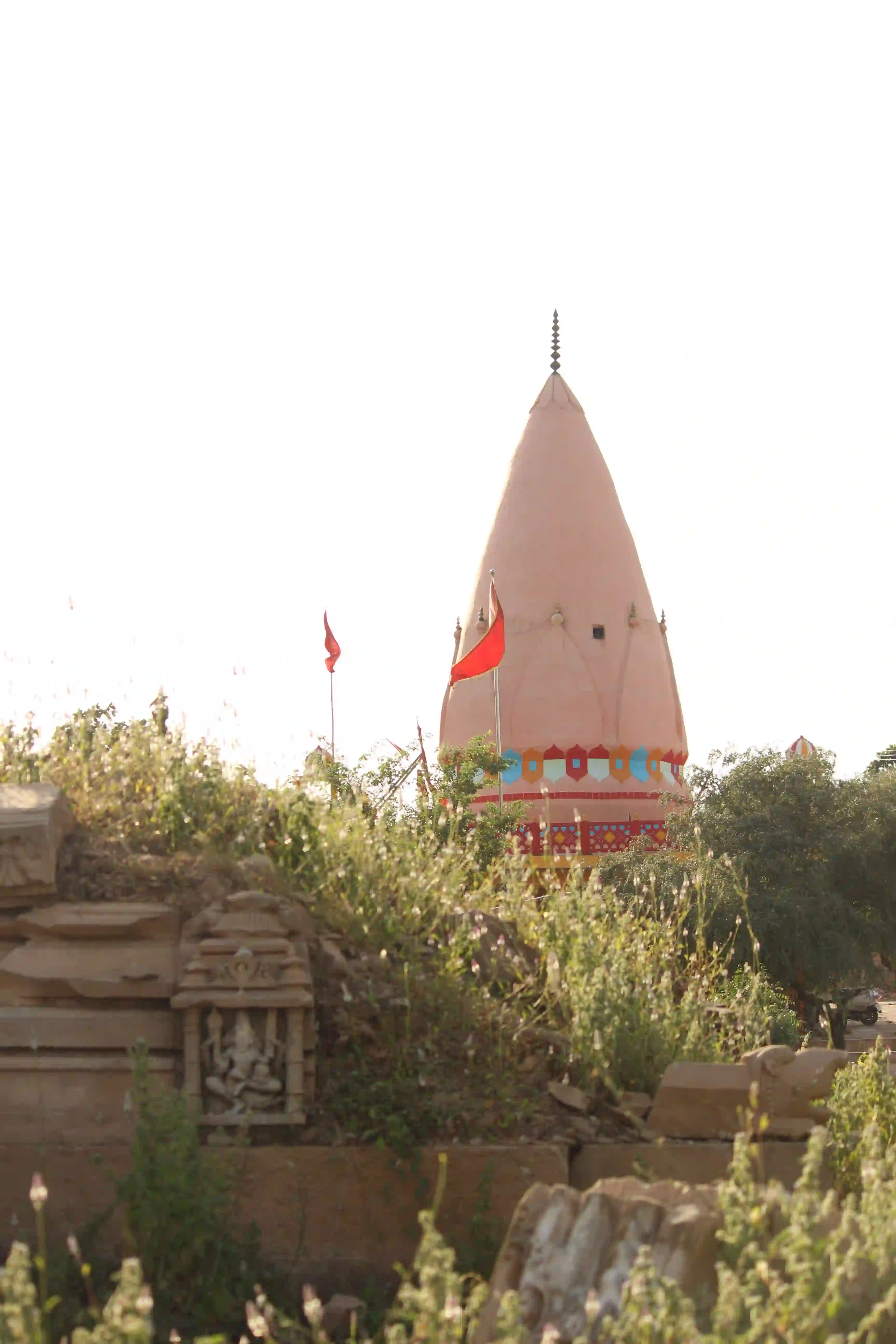
Shanichara Temple
Temples of Shani Deva are rare and the one in Morena is one of the most famous in this part of north India. On Saturday devotees flock to this temple. The Shani Jayanti which falls on the No Moon Day of Jyeshtha Month, is the greatest Saturday of the year for this temple and lakhs of devotees throng from all over the Chambal region and even from beyond. Hindus believe that giving away one’s hair on any pilgrimage means giving away one’s sins and bad karma. In Shani temple, people do not just give hair; they also give clothes and footwear. The Shanichara temple is the site where people give away everything. Shanichara is the geographical, spiritual and socio-cultural centre of Morena. Every road in Morena leads to Shanichara. It has three main approaches but roads from everywhere lead to Shanichara. The temple lies on a hill, meteoric crater. The Shanichara Temple is the spiritual lifeline of Morena.
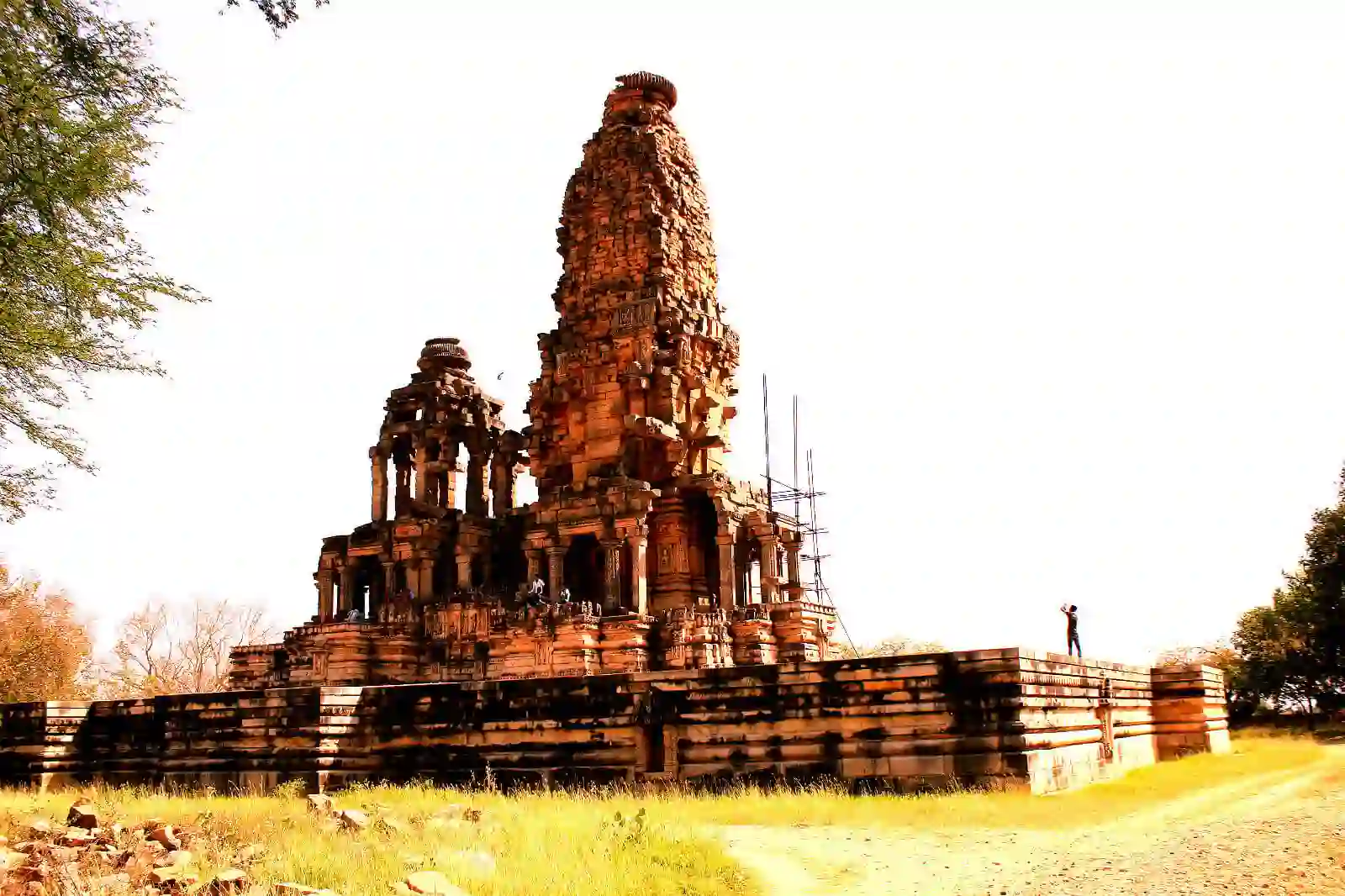
Kakanmath Śiva Temple
One of the greatest architectural wonders of Morena it situated near the village of Sihonia (derived from the ancient ‘Simhapaniya’). Built by Kirtiraja Kachhapaghata in 1015 C.E. in the style of the Khajuraho group of temples, it is a marvel to behold. It is more than 150 feet in height; and its mandapa has two stories. The temple has mukhamandapa, ardhamandapa and mahamandapa after which there are the antarala and the garbha-griha. The mahamandapa is marked by its two stories. All of these features accentuate the vertical profile of the temple, conforming to the idea of the Hindu temple as Mount Meru. The hypostyle pillars of the mahamandapa extend around the garbha-griha of the temple, forming a partially enclosed pradakshina patha (ambulatory passage). On the three sides of the walls of the garbha-griha there are gavaksha udgama with ratha niches containing deities.
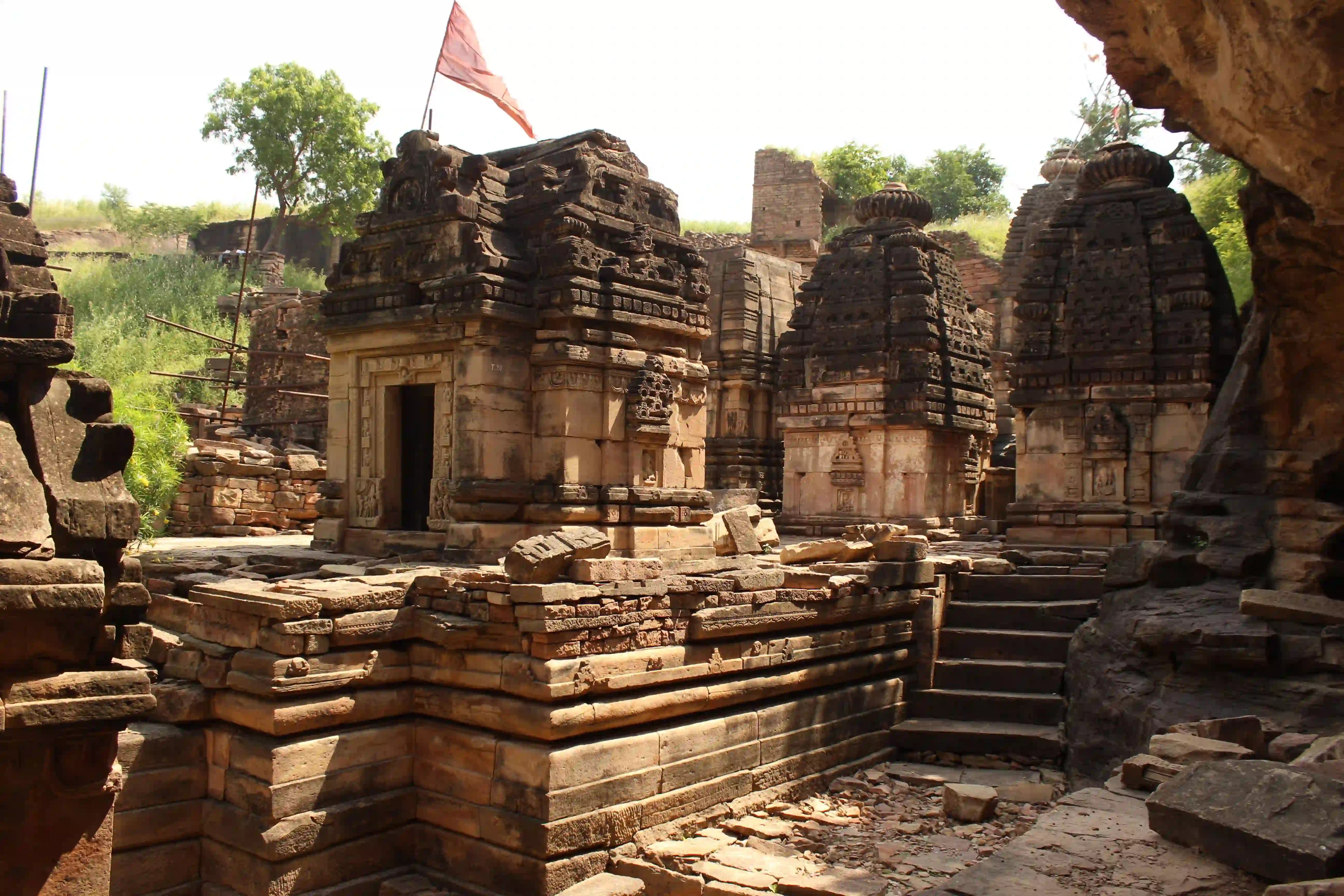
Naresar Group of Temples – 22
These group of 22 temples were built in the 8th century by Yashovarman and Amaraj of Kannauj. Albeit built by independent rulers, the architecture of these temples belongs to the Pratihara style, the dominant style of the region. The temples at Naresar exhibit the early stages of the nagara temples, with a precursory antarala, curvilinear shikhara and a square plan. The site also hosts the first example of the Valabhi shikhara in India. Most of these temples consist of a garbha-griha and a narrow antarala inside the doorway. Some of the temples have the peculiar plan of a pancharatha jangha and triratha shikhara. This site is in an illegal mining affected area and one has to trek for around 1.5 kilometres to reach it.
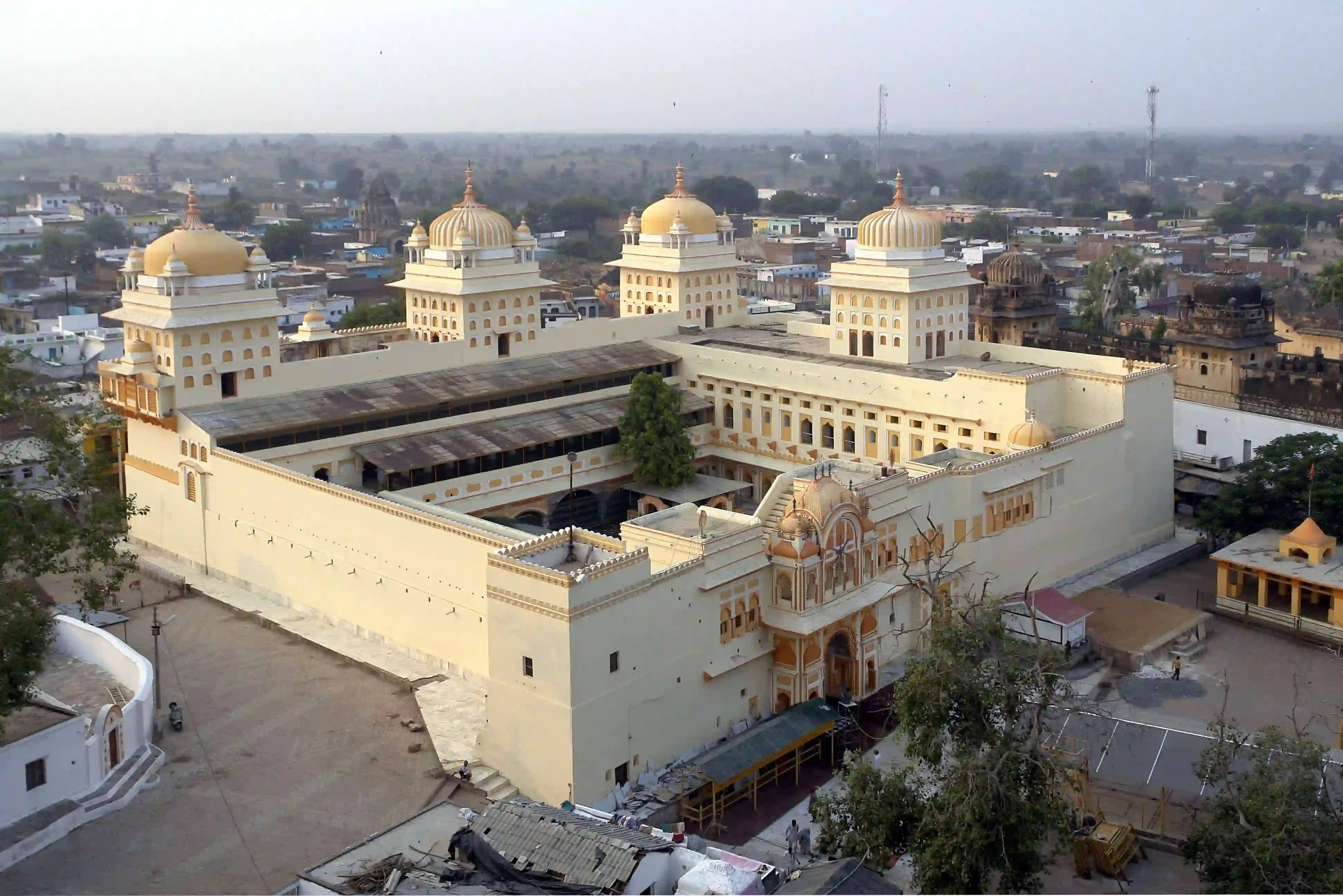
Ram Raja Temple
One of the most unique temples of Shri Rama in Bhāratavarṣa, this temple worships Shri Rama as Raja Rama or King Rama. A guard of honor is held every day and policemen are appointed as guards, as they would be in a real palace of a king. The temple legend tells of Queen Ganesh Kunwari going to Ayodhya and doing tough tapas to bring her lord Shri Rama in a child form with her to Orchha as her husband (a Krishna bhakta) challenged her to prove that her Rama is as powerful and loving as his Krishna. At last Shri Rama in child form agrees to come with her to Orchha but on a few conditions: that he will travel only during a certain Nakshatra and the first place he would be seated in Orchha is the place where he would be worshipped. When the Queen comes back, she is tired after months of travel and stops in her palace, and that is where Raja Rama stays till now. That is why Shri Rama as King Rama is worshipped in a palace and not the temple that was built for him.
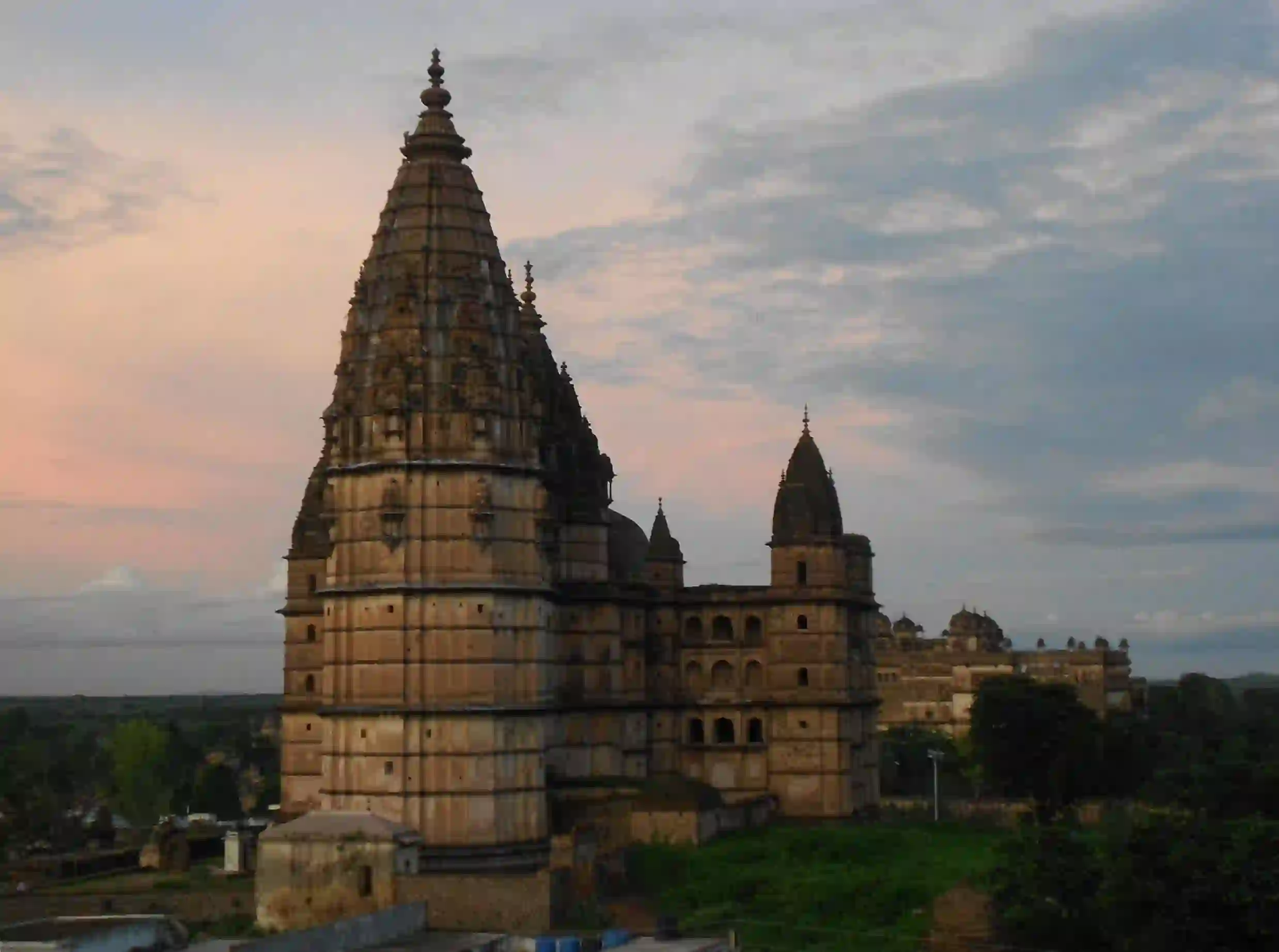
Chaturbhuj Temple
When Queen Ganesh Kunwari was challenged by her husband that her love for Rama is lesser than his love for Krishna she was hurt and determined to prove that her love for Rama was no less. So she set out to Ayodhya to bring Shri Rama back to worship him in a child form, just like Krishna is worshipped as Bala Gopala in his child form. Before leaving for Ayodhya, she ordered a temple to be built for her Rama Lala and this temple was to be known as Chaturbhuj temple, to house the form of Shri Vishnu. But upon return Shri Rama actually settled in the queen’s palace and the Chaturbhuj temple remained empty, which was later then graced by Radha Krishna. And so love for Shri Rama and Shri Krisna of the queen and the king both bore fruit in this great legend of Orchha.

Lakshminarayana Temple
This temple in Orchha is dedicate to Goddess Lakshmi. It was built by King Bir Singh Deo in 1622. It is said that the king wanted sacrifices to be offered to the goddess but the process was interrupted later on. The most important feature of this and other temples in Orchha is that almost all of them are also built like fortresses with very novel design and plan. These temples were created during some of the most battled times of Indian history when Islamic invaders were ruling the country and so they also functioned as mini fortresses to be able to withold sieges. The temple has great murals inside and is one of the unique architectural, cultural and historical gems of the great city of Orchha.

Chhatris and the Palaces
Chhatris and the Palaces by the River
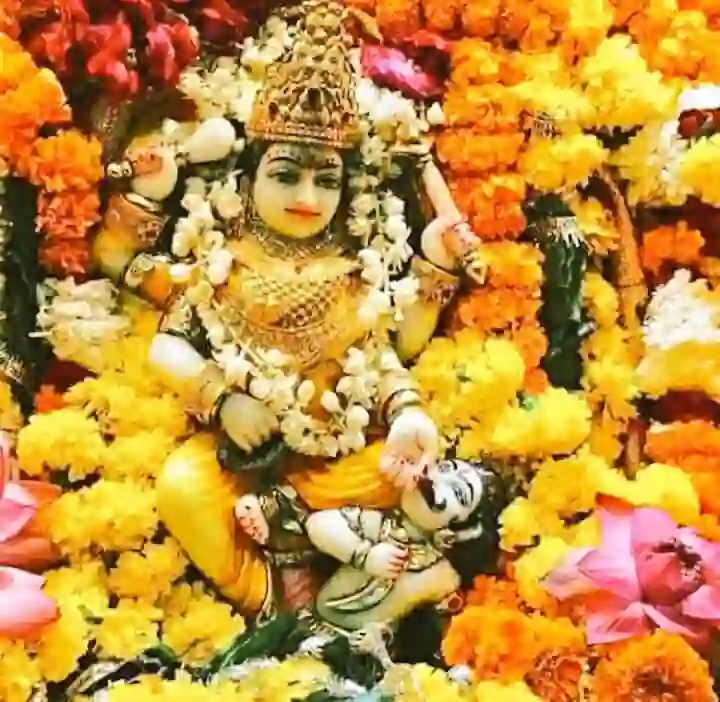
Maa Pitambara Shakti Peetha
Established by a Jnani in 1935, this Peetha is dedicated to one of the ten Mahavidyas, called Baglamukhi. As the goddess is said to be born out of turmeric water and is said to love the color yellow, here she is known by the name of Maa Pitambara. The place was a cremation ground, and that is why this Tantric peetha was established by Swami Ji here. The temple is also famous as the only place which also has a temple dedicated to Dhoomavati, the widow goddess who rules cremation grounds. The temple premises are a place which speaks legends to the power of Śakti which can rise anywhere and anytime in India and immerses the bhakta into local legends, and regional religious and cultural mores and customs.
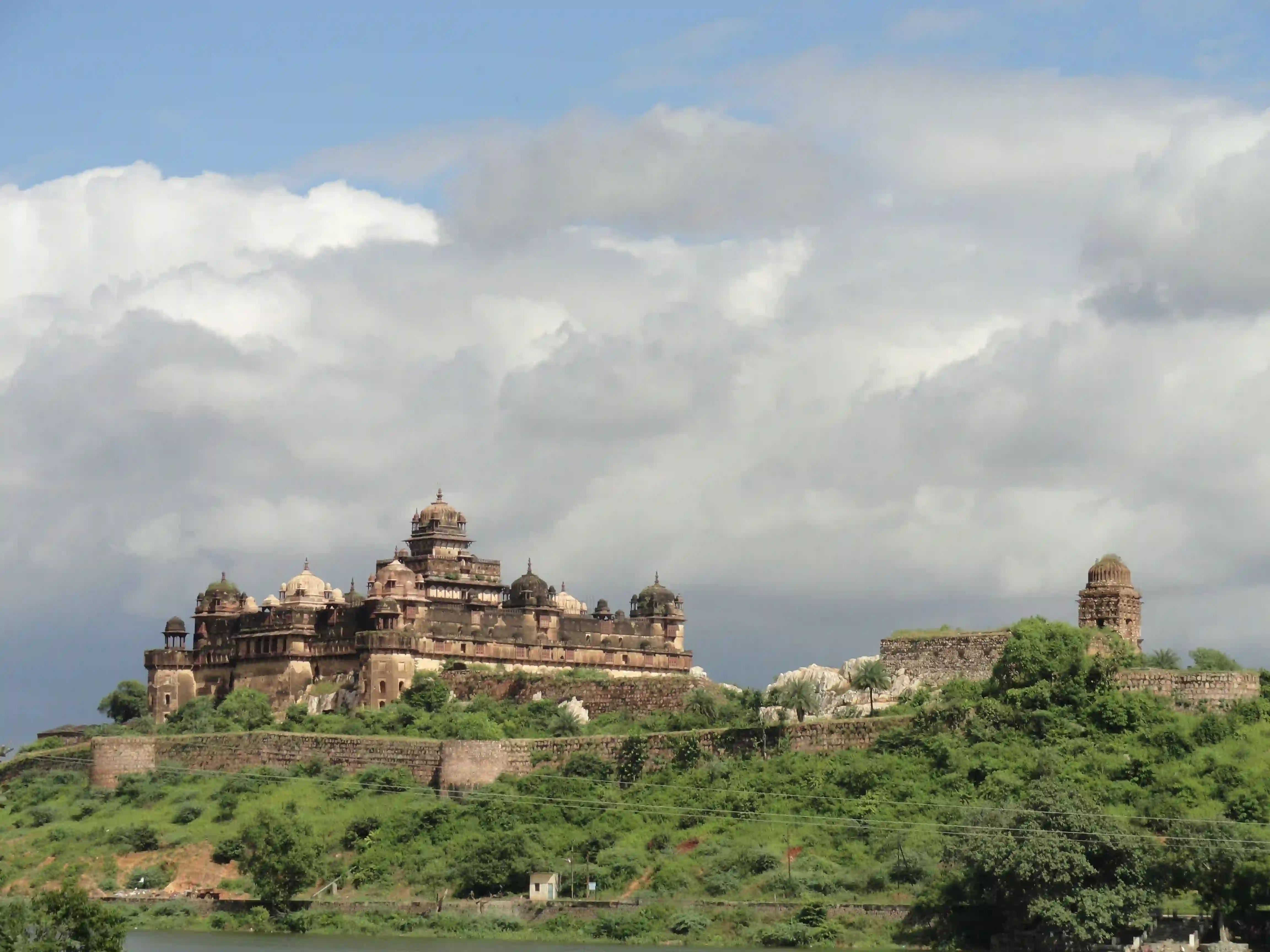
Bir Bikram Palace
This palace was built by the great Bundela king Bir Singh Deo in the city Datia known in the Mahabharata as the Daityavakra. It has seven stories and is famous for its visage which is visible from far. Overlooking the lake, it has a commanding presence. Maharaja Bir Bikram Deo is famous for having built 52 palaces all over his realm and this is one of his crowning glories. The valor and chivalry of the Bundellas is well known through the poetry of Subhadra Kumari Chauhan and the dynasty is known to be one of the first to rebel against the British Raj.